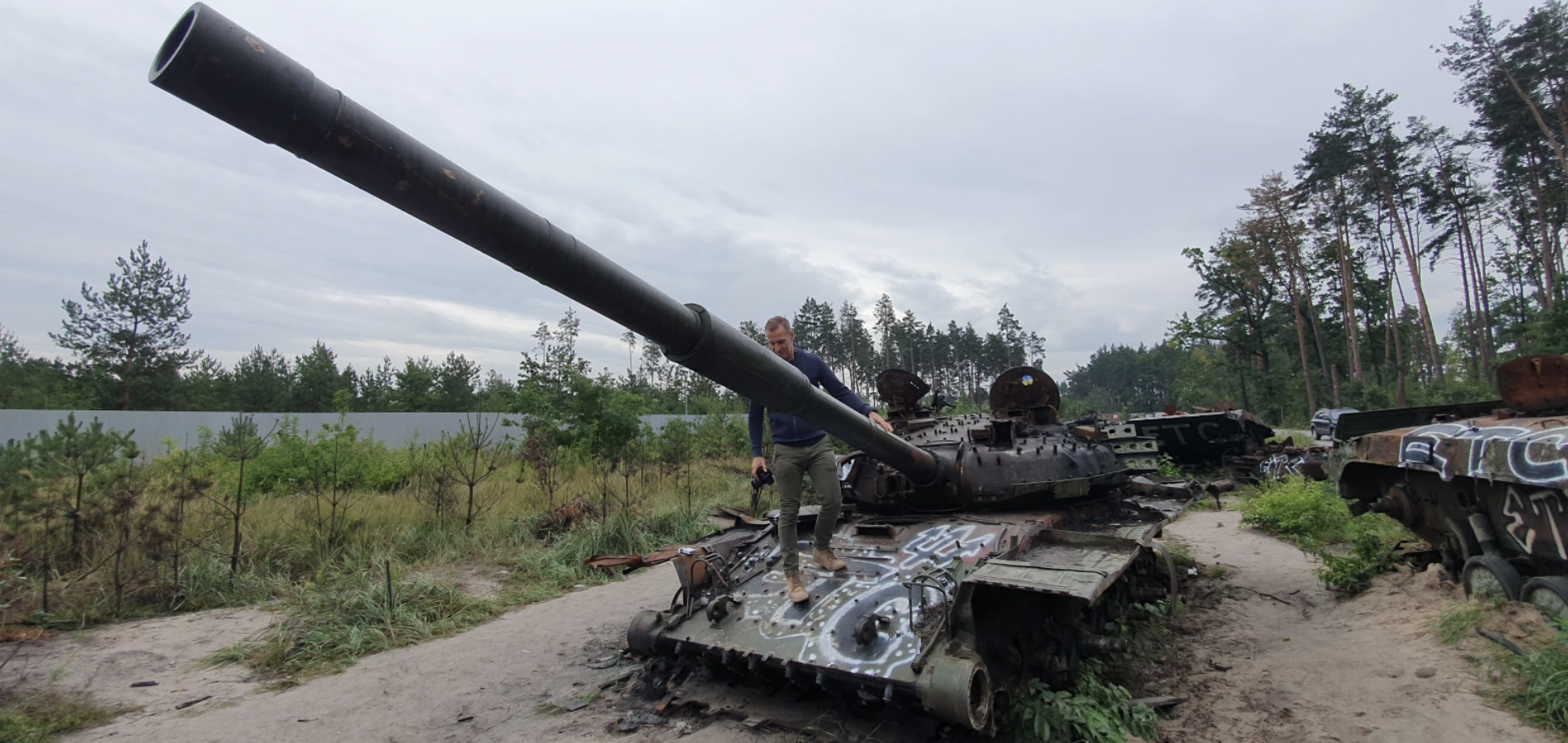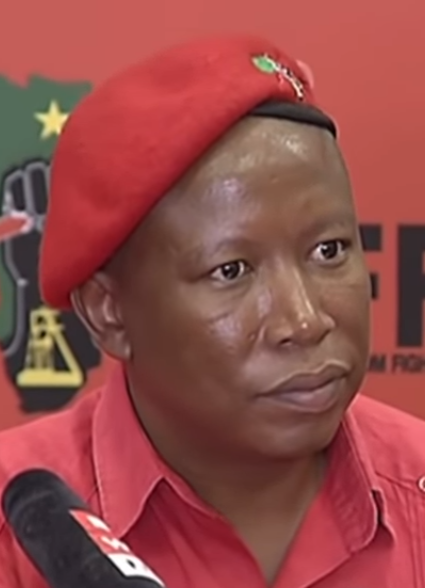News
Where Does Ukraine's Military Might Over Russia Come From?
A small drone company on the outskirts of Kyiv explains why Ukraine has not only survived Russia's military onslaught, but is now pushing Moscow's forces back in the northeast and putting them under pressure elsewhere.

On paper, Ukraine should have no chance militarily against Russia. A population of 44 million against 144 million; an active duty military of 250,000 (with 900,000 reserves) against one million (and two million in reserve), including a nuclear arsenal of zero versus nearly six thousand warheads; a landmass of 600,000 compared with 17 million square kilometres; a GDP of $155-billion versus $1.5-trillion.
Even if Marx might have said that “quantity has a quality all of its own”, military capability — like governance — is much more than about the inner stuffings of motivation, training, ability to integrate and use technology, strategy, leadership and tactics than it is about statistics.
In many respects, Ukraine's is a much better army because it has learnt how to use its assets well, and because it is fighting for its survival and on its own territory. It has cultivated and harnessed international assistance, and knows exactly why it needs it and wants to do with this help. And it's used the time since 2014 — when President Vladimir Putin tried to teach Kyiv a lesson following the Euromaidan protests by seizing chunks of the east and Crimea — to get this right.
The recent operation around Ukraine's second-largest city of Kharkiv to the northeast, pre-war population 1.4 million, demonstrates just how smart the Ukrainians are fighting.
Ukraine's recent success has been down, in simple terms, to a feint, deliberate or otherwise, carried out in the southern city of Kherson (which was taken by Russia in the early days of the conflict ostensibly to guard the supply routes to Crimea) through building up forces and pressuring the Russians amassing on the western bank of the Dnieper River. Ukrainians' intentions were carefully telegraphed in the build-up of materiel and troops, and became a media focus. The Russians believed that the attack was coming in that direction.
Then, unexpectedly, the Ukrainians attacked, despite a numerical disadvantage, in the areas around Kharkiv, rapidly “deoccupying” an estimated 8,000 square kilometres in the process, an area about half the size of Gauteng.
Several reasons stand out in explaining the Russian retreat, or “regrouping” as Moscow prefers to spin the past 10 days.
The first lesson is about strategy and tools.
The feint was masterful because it got inside the Russian mind. Ukraine's military understands Soviet-era thinking, but has been “upgraded” with Western thinking, tech and flexibility. The Ukrainians had to have the Russians believe they would try to take Kherson in the south. To do that, they had to move troops into the area. While doing this, they had to keep the Kharkiv build-up 600km away “under the radar” yet large and capable enough in composition to do the job.
The satellite-guided and US-supplied High Mobility Artillery Rocket System, or Himars, long-range rocket artillery has been the critical new tool, enabling pinpoint targeting of Russian logistics, command and control, arms depots, and convoys. It is a running joke that the Russian army is not just big, but long.
The fitting of American-supplied Heat Anti-Radiation missiles (Harm) on Ukraine's Soviet-designed MiG-29 fighter jets, has also helped in neutralising the Russian air threat.
But the tools are not simply kinetic. The media played a big part in the narrative about the relieve of Odesa, along with steady utterances about Crimea and occasional attacks on the peninsula. More than anything, however, the success of these ploys relied on a Russian leadership unaccustomed to fighting a battle against an enemy that thought hard and fought back.
And nor are the tools new and entirely foreign.
Indeed, a second lesson is that leadership matters. Ukraine has mobilised every aspect to get through this existential crisis. President Zelensky's brand of leadership and language has set a Churchillian tone from the outset. Credit for the successes so far should go to him also in backing his military leadership, and that military for leading a relatively small force to a famous defence and now, in the northeast, victory.
But the capability is evident through the ranks, as much bottom-up as top-down.
Skyeton started making two-seater composite passenger sports planes in 2006. After selling more than 80 worldwide, and realising how the world had changed for Ukraine after 2014, the company went into unmanned (and so far unarmed) reconnaissance drones. Housed in a non-descript building — perhaps deliberately so — in Kyiv's southern suburbs, since then Skyeton's team of 100 has designed and built in-house and built hundreds of catapult launched drones. Known as the Raybird-3 and weighing in at 23kg all-up, it can loiter at a cruising speed of 120km/h for up to 30 hours on just nine litres of fuel for its 40cc single-cylinder four-stroke engine. It's designed to be highly portable, and modular to enable swift repairs, the composite airframe being broken down in under five minutes, and with no tools.
Everything is produced locally apart from the camera, engine block and GPS system. Brand-new top-of-the-range CNC milling machines whir constantly, while the laminating, electronics and final assembly lines are busy stacking parts and planes.
In the loading bay, dozens of olive-green silicon flight chests wait for delivery, each housing a fuselage, wings and tailplane, along with a kit of spares.
The Raybird 3 has many advantages, not least cost and precision, but it's also cheap by the standards of this industry, at under one million dollars for a three-aircraft entry-level package. It has quickly evolved, with a weaponised version under construction.
It has qualities of which a South African engineer would appreciate. Its durability, averaging 400 landings compared with the 7-15 of industry rivals, is down to a parachute and airbag landing system. Its compact nature, with a wingspan of just three metres, improves its portability and radar signature. To date, Skyeton admits to just two of its drones being shot down in combat, and one by their own side. The integration of civilian technologies, including the engine and other high-tech bits, keeps costs low and channels available expertise. And the never-say-die spirit of its workforce, most of whom are under 30, is evident in the development of the control unit. While a Middle Eastern country was willing to sell a unit, “it was without the capabilities we required. So we built our own.” The same adaptability was present in the early days of the battle, when GPS coverage was down, and old-fashioned “fire and adjust” tactics were integrated with drone observation.
Unsurprisingly, there is much foreign interest, with Raybirds having already been sold to several African customers. The Skyeton story shows that technology is no longer the barrier it once was. And yet skills remain so, especially powers of listening, strategising, organising and implementation. This is where many militaries — including some in Africa — fall short, in believing that the answer lies in new equipment and more money.
Such tools and strategy — together with a large dose of ingenuity — have together increasingly shaped the battle. Throw in the mix of weaponry, a highly motivated army, and a steady flow of intelligence, the withdrawal of experienced Russian forces to defend Kherson, and the scene was set for the spectacular recent advances around Kharkiv.
A third lesson is in the imperative to hold the initiative. The Ukrainians had to demonstrate at home and to allies abroad that this was not going to end up as a “frozen” conflict, literally and metaphorically as winter set in. This would otherwise offer the Russians leverage to squeeze continued European support for Ukraine over gas supplies. Kyiv also could not afford — politically as much as militarily — to continue to grind the war out countrywide, especially in the east, which suited the Russians given their larger numbers, and careless regard for casualties. For the same reason, the Ukrainians could not afford to escalate in Kherson given the high projections of casualties and the curtain of artillery the Russians could lay down.

There is still a long way to go in this war, but the narrative has shifted.
From the Russian perspective, Putin has lost at least as much face as his armed forces equipment. And the latter list is long and growing. The Ukrainians assess that more than 53,000 Russians have now died, and admit to 9,000 killed among their own forces, excluding the 13,000 Ukrainians who were killed in the eight-year conflict from 2014 and the tens of thousands of civilians who have died since the Russian invasion on 24 February. In the Kyiv suburb of Bucha alone, more than 400 died; in the port of Mariupol, the figure may be as high as 22,000 civilians.
The exact figure of Russian losses may be impossible to verify given Moscow's secrecy, but recent Pentagon figures put the number of Russians killed and wounded around 75,000. The numbers of equipment lost is easier to determine, as much of it is captured in photographs or is now in Ukrainian hands, with estimates of Russian armoured vehicle losses now claimed as high as 3,400 units including mobile command posts, tanks, electronic warfare jammers, and infantry fighting vehicles, around two-thirds of which have been destroyed.
Putin could mobilise fresh Russian forces, but this will both not offer an instant solution, and risks him appearing weak and desperate. He may be tempted to lash out with heavier weapons or even to go scorched earth with chemical or tactical nuclear options as a warning not only to Ukraine, but to the West. Somehow he needs to make this misguided adventure look like a form of victory or a masterful display of chess with many moves still to play — where he is deliberately sacrificing a piece to achieve success. He is most likely to continue to weaponise anything and everything, where military attacks against civilians and infrastructure (including water and electricity) is part of the Russian playbook, just as in Syria, Georgia and Chechnya.
Putin of course would like to claim that this is a war between the West and Russia, simply because he cannot compute that the country he wanted to recolonise is biting back so hard that senior Ukrainian politicians talk not only about a post-Putin Russia but a post-Russia Russia.
Some Ukrainians believe their goal should not simply be to return to the pre-24 February invasion status quo, or even in reclaiming the lands lost to Russia in Moscow's 2014 invasion, but rather to establish the conditions that would prevent Russia from attempting this again. Ukrainian politicians speak of breaking up Russia into its constituent nationalities, others less ambitiously of regime change, but all agree that reducing the threat will require keeping the pressure up, militarily, economically through sanctions, and by striking out at Russian bases wherever these may be.
Short-term goals are more modest, including recapturing the nuclear power plant in Zaporizhzhia, cutting off and pushing out Russian forces in Mariupol and elsewhere along the Black and Azov seas, and now to grind down the 20,000 or so Russian troops in the Kherson pocket.
The setbacks around Kharkiv pose another problem for the Russians: logistics. Much of the railway system across Ukraine runs eastwest, designed for extraction and export of raw materials. The Ukrainians have now captured one of the few northsouth junctions at Kupyansk, which forces the Russians to feed in troops and supplies from farther afield. The Ukrainian push also extends the range of its artillery, so making the job of the Russians that much harder.
In the longer term, Ukraine has to win more than militarily of course. This is a struggle about democratic choices and the rule of law, about what kind of country Ukraine wants to be. How it projects that will relate to the way in which it makes peace.
The plan for peace, and not just for war, has to be rooted in the reality of the fickleness of its external supporters (just ask any Afghan), and has to tackle the highly extractive (for which read, corrupt) environment that has plagued Ukraine's governance, an oligopolistic structure of crony capitalism known locally as systema. A failure to fight a war on this scourge, after the Russian episode is over, will only lead, longer term, to further crises and missed opportunity. Again, just ask any Afghan. The fight against Russia is the immediate battle; the war on building a just society and economy is a much longer affair.
But, for now, what is most notable today, six months into this war, is that Putin is no longer in control of the outcome and does not hold all of the cards. If anything, the balance of favour has, for the moment, tilted to Kyiv.
This article originally appeared on the Daily Maverick


